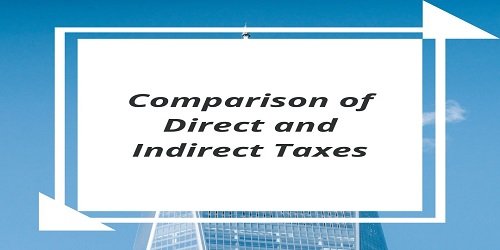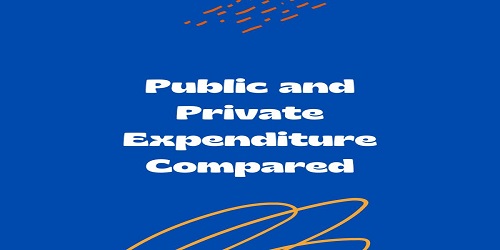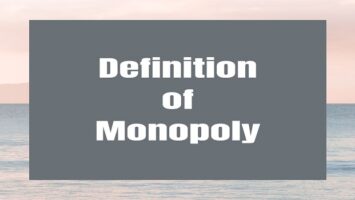Table of Contents
Comparison of Direct and Indirect Taxes:
Direct and indirect taxes are now compared on the basis of-
- Allocation of resources.
- Administrative point of view.
- Distributional effect.
Allocative Effects:
It is generally maintained that the allocative effects of indirect taxes are inferior to those of direct taxes. It implies that, if a given amount of money is to be collected through taxes, the burden of the tax or the sacrifice involved would be greater in the case of indirect taxes than direct taxes. Let us now analyze it with the help of a diagram, using indifference curve techniques.
Now suppose a particular amount of money, say SQ2 is to be collected through taxes; it can be collected through an indirect tax, say excise duty as well as from a direct tax, say income tax. Now we have to analyze, whether the consumer will get better satisfaction (or will be subjected to less sacrifice) if he pays it through excise duty (indirect tax) or through income tax (direct tax).
In the diagram below, X-axis represents a commodity-X while the Y-axis represents the income of an individual. OP is the given income and PA is the price line. C1 is the difference curve, which touches the price line PA at point Q1. Thus, the consumer with OP amount of income will be able to purchase OA amount of commodity-X. But he will be in equilibrium at the point Q1, where he is able to purchase PN1 amount of commodity, X by incurring N1Q1 amount of money. This is a condition when no tax is imposed, or he does not pay any tax.

Now suppose an excise duty is imposed on commodity-X and it is included in the price so that the increase in price is equal to the amount of tax imposed. But with the increase in the price of commodity-X, the consumer is able to purchase less at his present monetary income OP. Suppose, with OP amount of money (income) he is able to purchase OA1, amount of commodity-X. Hence, the new price line would be A1P. It is the result of excise duty on commodity-X, because of which he is able to purchase less than before, C2 is the indifference curve, which touches the price line PA1 at point Q2. Thus, the consumer is in equilibrium at point Q2. Now the consumer can buy only PN2 amount of commodity-X, instead of PN1 before taxation. Now he spends Q2N2 amount of money to buy PN2 amount of commodity-X, whereas before taxation, he has to spend only N1Q1 amount of money to purchase PN1 amount of commodity-X. Thus, he spends more and gets less in line with his total expenditure Q2N2, SQ2 is paid as excise duty to the government. Thus, SQ2 is the difference between the old and new price lines PA and PA1 respectively. It implies that the amount of excise duty and the change in the price are of the same magnitude.
Now it is to be analyzed that, what will be the impact upon the consumer, when the same amount of revenue SQ2 is collected by the government through a direct tax, say income tax instead of excise duty. In this case, the consumer’s disposable income is reduced by the amount of tax SQ2. Therefore, SQ2 is deducted from the original price line PA, or income line PA, and we get a new price line P1A2 or a new income line P1A2 (since SQ2 = PP1). But in this case, the price of the commodity does not change as a result of the direct tax or income tax. Therefore, the new price line P1A2 is parallel to the original price line PA. C3 is the indifference curve, which touches the new price line P1A2 at point Q3. Thus, the consumer is in equilibrium at point Q3. But C3 is a higher indifference curve than C2. Hence, the consumer gets greater satisfaction at point Q3 than at point Q2. Therefore, the disutility in the case of indirect tax is greater than that of direct tax of an equal amount. In other words, a consumer gets greater satisfaction under direct taxation than under indirect taxation.
Administrative Aspect:
A comparison between direct and indirect taxes can be made from the point of view of administrative cost and efficiency. Generally, direct taxes are not imposed on low incomes because of the administrative point of view. For instance, in India, the majority of people in villages are exempt from income tax because of extremely low levels of income. Therefore, we cannot approach each individual through direct taxes, because of their unpleasant nature and administrative cost. Hence, from the point of view of administrative costs, indirect taxes are considered superior to that of direct taxes.
Prof. Prest supported indirect taxes on the grounds of administrative cost and stated the circumstances in which indirect taxation may be more suitable. In the case of a large number of small, unorganized, and independent producers or an illiterate population incapable of maintaining accounts, a barter system exists and most of the people are living at a subsistence level, indirect taxation is preferable to direct taxation. These conditions may be found in a backward and underdeveloped economy. However, this does not mean that direct taxes are inferior to indirect taxes in all respects.
Distribution Aspect:
Direct and indirect taxes may be compared on the basis of distribution effects. Direct taxes are considered an important instrument to remove inequalities of income and wealth, as they are generally progressive in nature. Hence, they fall more heavily on the rich than on the poor. On the other hand, indirect taxes fall on all incomes; hence, they are generally regressive in nature. Therefore, indirect taxes are generally not suitable from the point of view of removing inequalities of income and wealth
However, it does not mean indirect taxes cannot be made progressive. They can be made progressive by imposing heavy taxes on those articles of consumption which are generally consumed by higher income groups and exempting those goods which are of common consumption. It is, therefore, concluded that both direct and indirect types of taxes have their own merits and none can be regarded as inferior to the other. Thus, Prof Prest concludes that “over a wide range, direct and indirect taxes are alternative methods of achieving any particular redistribution of income on which the government of the day may be bent.”









Comments (No)